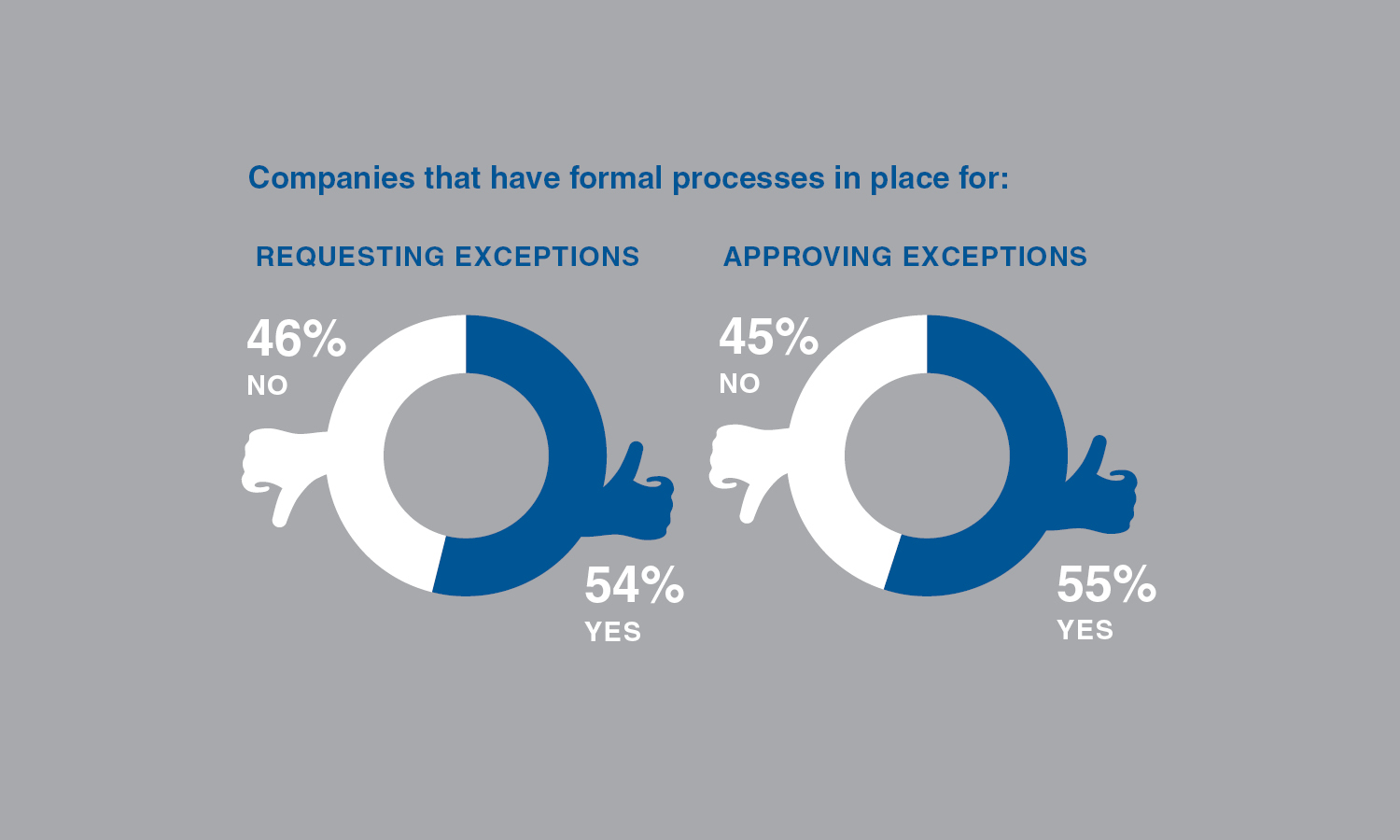
Some companies manage mobility by “exception.” It’s how they build “flexibility” into their programs.
But that can lead to excessive costs and time-consuming administrative burdens. While you may not be able to totally avoid them, there are some best practices that can limit the cost and administrative burden while ensuring a more consistent and equitable approach.
Although the range is considerable, a company with 100 moves per year spends about $200K annually in exceptions. It is considerably higher for companies with larger mobile populations or more varied program types (including international transfers and VIP moves). Most companies consider each exception on a case by case basis. That said, only 50-60% of the cases considered are ultimately approved.
The most common exception requests fall into the following categories:
- Extending temporary living,
- Extending the overall relocation timeframe,
- Household goods transportation, and
- Return trips.
Exceptions to “household goods” range from boats, motorcycles and crating for TVs, to extra pick up and drop off locations or additional labor for weekend delivery to avoid storage. Some exceptions may actually result in lower overall costs but costs aren’t the only factor that should be considered when evaluating a request:
Criteria for Evaluating a Policy Exception Request
- Is the exception request caused by circumstances over which the transferee totally or substantially had control but failed to exercise the control?
- Does the standard policy provision in question truly create a personal, family, and/or financial hardship for the transferee?
- Are the transferee’s circumstances sufficiently unique to warrant the exception?
- Are there alternatives to the exception request?
- Is the cost of the exception acceptable?
- Does the transferee possess critical skills urgently needed in the new work location, thereby justifying the cost of the exception?
- Is there a precedent of a previous, similar exception approval that provides guidance for deciding the current request?

A sure way to reduce exceptions is to require the request in writing and institute a formal review and approval process. According to our most recent survey, only 54% of companies require employees to submit their exception requests in writing – a requirement that can often result in fewer exceptions because the transferee is reluctant to put forth the effort, or is hesitant to do so knowing their manager will be reviewing the request.
Another tip is to rename your Miscellaneous Allowance an “Exception Allowance” inferring that any exceptions to policy are designed to be covered by that specific allowance. To minimize the administrative burdens you may want to establish pre-approved authority guidelines to expedite exceptions. Often a dollar amount is authorized for VIPs to ensure speedy approval process.
With a little consistency, clear policy language and some common sense, you can contain exceptions to the rule and limit your exception costs.